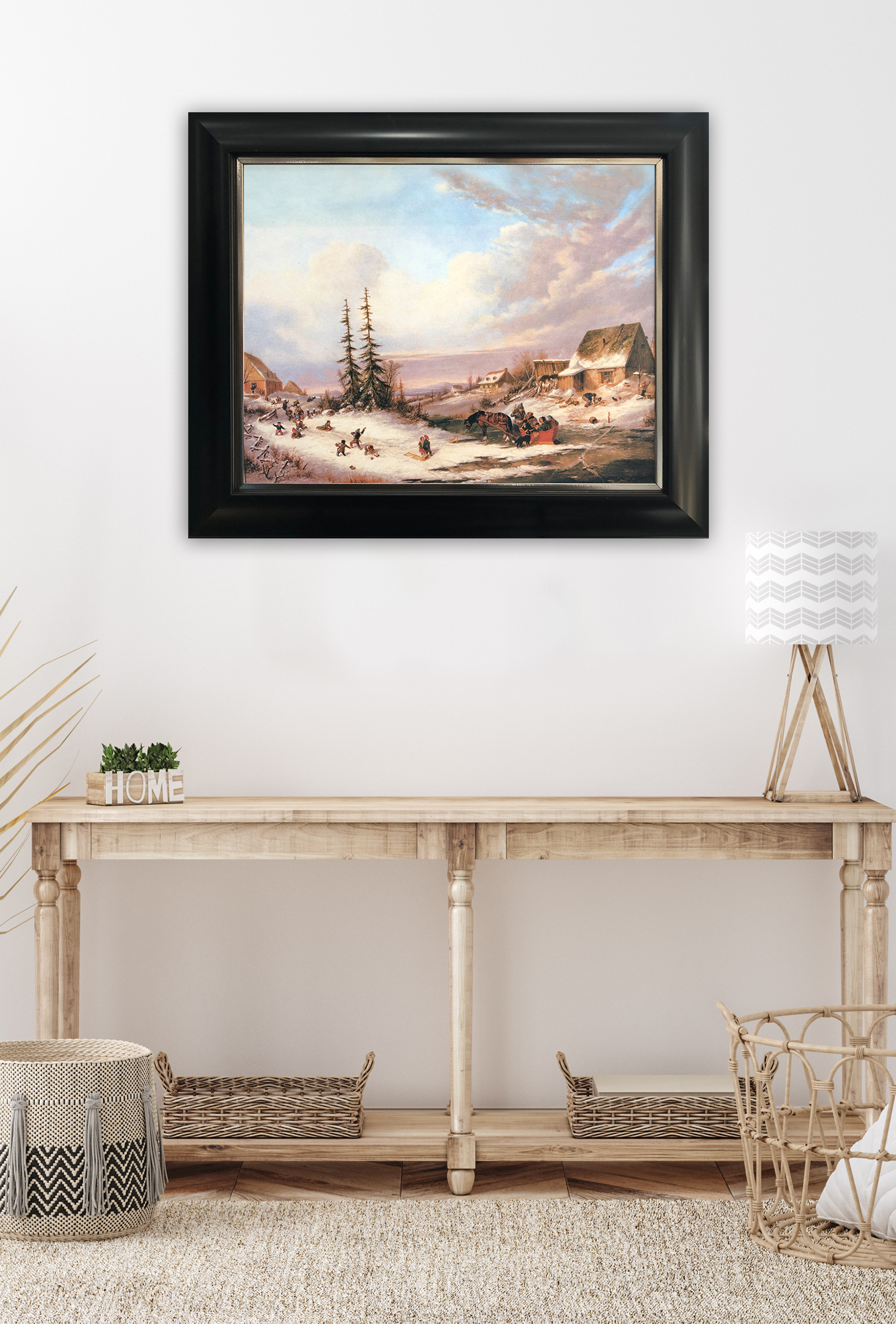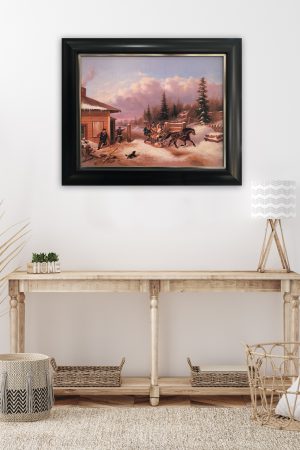Cornelius Krieghoff
Cornelius David Krieghoff painted images of Canada when the development of popular imagery of the country was in its early stages. He was an entrepreneur and created a populist vision of the country’s landscape and peoples, describing the customs and traditions of various Native peoples and the activities and character of the French-Canadian settler or habitant.
Krieghoff emigrated to New York and joined the United States Army in 1837. There he met his future wife, Émilie Gauthier, and in 1840 they moved to Montreal, where he began working as an artist. He travelled to Paris in 1844, where he copied masterworks at the Louvre under the direction of Michel-Martin Drölling, and returned to Montreal in 1846, advertising himself as an artist. He established a studio and began painting his views of people and activities. In these works, clothing and supporting objects are painted in fine detail while faces of the figures are more generalized. By 1850 Krieghoff was producing numerous paintings and had made prints from ten of them that were available in both colour and black and white. He was exhibiting and selling at auctions, with his ambitious production aimed for sales to a rising middle class.
He and his family moved to Quebec City in 1853, where Krieghoff painted city views and the surrounding region. Among his repertoire were emblematic figures of Native peoples and habitants with particular attributes and actions defining their class or regional characteristics, as well as scenes of social celebration and winter festivities.
Krieghoff continued to exhibit his work and sell prints and photo-reproductions of his work while he lived in Europe (1863 -1870); however, the prolific production that he was engaged in during his years in Quebec slowed down. He maintained connections with Canada while abroad and the sale and exhibition of his work continued. He returned briefly to Quebec in 1871 before announcing a move to Chicago, where he died a few months later in 1872.





